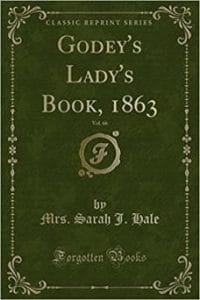As we prepare to travel “over the river and through the wood,” we can’t help but ponder the nostalgic sights, sounds and smells of the traditional Thanksgiving dinner: Roasted turkey, stuffing, mashed potatoes, candied yams, cranberry sauce, sweet corn, and a delicious slice of pumpkin pie to top it off – just like the Pilgrims and Native Americans enjoyed on the very first Thanksgiving celebration.
Truth be told, however, many of the “traditional” Thanksgiving dinner dishes are relatively new and as much about marketing and advertising as genuine history.
For starters, some debate exists as to what event should be called “the first” Thanksgiving dinner in history. Most historians point to the three-day celebration at the Plymouth Plantation in 1621, although similar feasts had been celebrated both by colonists and Native Americans before then. From records written by colonist Edward Winslow, we know that the Pilgrims hunted “wild fowl” for the meal, but no specific mention is made of turkey. Although wild turkeys were plentiful in the area at the time, it could just as easily have been ducks and geese. The main course more likely consisted of the five deer that were provided by the Wampanoag tribe and their king, Massasoit. Fish and shellfish were also served.
So, while there may have been a turkey or two on the table, it certainly wasn’t the centerpiece of the first Thanksgiving. Potatoes (either white or sweet) had yet to be brought to North America from their native homes – South America and the Caribbean, respectively. While cranberries were around, the first mention of boiling them with sugar didn’t come until over 40 years later. Also, sugar would have been a rare commodity in the New World at that time.
Green bean casserole was centuries in the future, but vegetables would have been plentiful. After all, the meal came about as a celebration of the first harvest. The American Indians did indeed teach the Pilgrims how to cultivate native crops including onions, carrots, garlic, squash, pumpkins and corn. The maize at the first Thanksgiving, however, wasn’t the peaches and cream sweet variety, but rather flint corn with its multicolored kernels, ground up into a dish similar to porridge. And, although they ate roasted pumpkins, it would have been impossible to make pumpkin pie without wheat flour, butter, and the aforementioned sugar.
So where did our traditional Thanksgiving dinner come from? It wasn’t until 200 years afterward, when Sarah Joseph Hale started printing Thanksgiving recipes in her popular women’s magazine Godey’s Lady’s Book. It was Hale who, starting in 1827, petitioned 13 different U.S. Presidents to declare Thanksgiving a national holiday. At last, in 1863—242 years after the alleged first Thanksgiving—Abraham Lincoln declared the fourth Thursday in November a national day of thanks in an attempt to unite a divided, war torn nation.
Today, Thanksgiving is ingrained in our national calendar. It’s as American as pumpkin pie, and you can celebrate it with a butterball, a lobster or venison.








